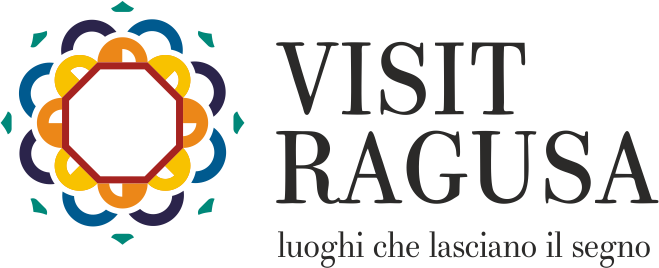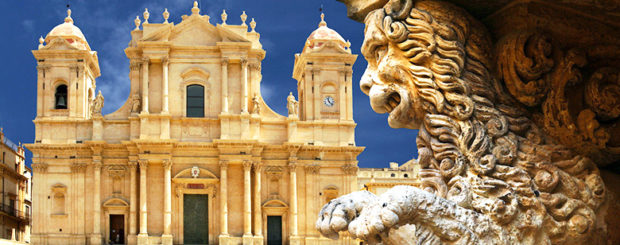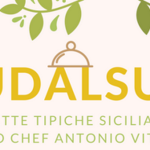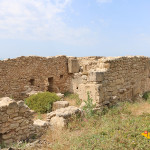Tour of Noto: jewel of Sicilian baroque style
Tour of Noto: jewel of Sicilian baroque style
Noto is the UNESCO European capital of Baroque because you can witness the wonder of this style everywhere.
The urban layout of the city is set on a regular orthogonal pattern, marked by parallel courses enriched with beautiful squares and sumptuous palaces which remain among the highest expressions of eighteenth-century Europe. The main axis is Corso Vittorio Emanuele, punctuated by three squares in each of which there is a church. Corso Vittorio Emanuele is announced by the Porta Reale, a monumental entrance in the shape of triumphal arch (built in the nineteenth century.). The visit continues with the Chiesa di S.Francesco all’Immacolata and its impressive staircase; the Cattedrale di San Nicolò characterized by a classical facade; the Palazzo Ducezio built from the middle of the eighteenth century until the early decades of the nineteenth century; Via Nicolaci and Palazzo Nicolaci with its exuberant balconies, shaped fancy shelves of cherubs, horses and grotesque figures; Piazza XVI Maggio and the Chiesa di San Domenico where, in his left aisle, you can admire the altarpiece of “St. Domenico receiving the Holy Spirit “and the” Madonna of the Rosary “painted by Vito D’Anna.
ITINARARY SCHEDULE
- Price per person: Adults 45,00 euro – Children (4 to 12 yrs old) 22,50 euro – Infants free (0 – 3 yrs old). The indicated price is for a minimum number of 4 participants (Adults)
- Departure: Wednesday
- Departure point: Marina di Ragusa
- Departure time: 9:00
- The price includes: Round-trip transfer from Marina di Ragusa – Driver at your disposal – Audio guide
- The price does not include: Anything not mentioned in the price includes
- Number of participants: Minimum 4
- Duration: 7 hours approx.
- Level of difficulty: Low
- Possible pick up from other locations. The cost of pick up from your accommodation is dependent on the Hotel location.
FILL OUT THIS FORM TO BOOK YOUR ITINERARY!
Social Share
BLOG
Fudalsud - Ricette tipiche siciliane
Caucana, viaggio nel tempo
| M | T | W | T | F | S | S |
|---|---|---|---|---|---|---|
| « Mar | ||||||
| 1 | 2 | 3 | 4 | 5 | 6 | |
| 7 | 8 | 9 | 10 | 11 | 12 | 13 |
| 14 | 15 | 16 | 17 | 18 | 19 | 20 |
| 21 | 22 | 23 | 24 | 25 | 26 | 27 |
| 28 | 29 | 30 | ||||
 Mail: info@visitragusa.it
Mail: info@visitragusa.itISCRIVITI ALLA NOSTRA NEWSLETTER
© 2017 Visit Ragusa All Rights Reserved.
Visit Ragusa Srls - P.IVA: 01649420880






